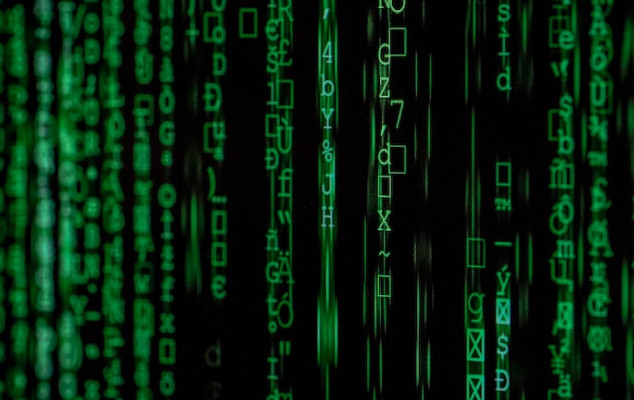Viruses can kill you, too can damage and destroy the data on your SD card.
In this article, we are going to list down what are the steps you can take to check whether your memory card has any viruses and ways to prevent it from getting viruses.
Symptoms Your SD Card Having Virus
The safety and security of the data stored in your SD card can be compromised by cyber-attacks or malicious software. It is important to recognize any signs that may indicate an infection has occurred on the device itself.
Here are some tell-tale signs and how you can identify the symptoms:
- cannot access the SD card
- reading or writing becomes very slow
- your files become shortcut files
- files are hidden prompting you to assume they are missing
- encounter many SD card error messages
- files get removed or deleted without your notice
- cannot copy the data on your card
- your SD card gets freeze or crash randomly
Once you have identified any one of the above symptoms, you may want to scan your SD card for any virus using some methods we suggest.
Methods to Scan for Virus on SD Cards

(1) Method 1 using CHKDSK command – for Windows PC users
You will need a card reader to access your SD card. Below are the steps you can follow:
Step 1: Click on the Start option from the Windows taskbar and select Computer
Step 2: Search for the drive which contains your SD card
Step 3: Click the Start option again. Type “cmd” in the search box and hit “Enter”
Step 4: A command window will open, type “chkdsk” followed by the drive letter with your SD card inside, then by a colon and /f (e.g. chkdsk E: /f) and hit “Enter”
Step 5: The CHKDSK command will start the scanning process of the SD card

Step 6: If there is no error, a message like this will appear “Windows has checked the file system and found no problems”. And additional information is provided: Type of File System (e.g. FAT32), Volume Serial Number, Number of hidden files, Number of folders and files, and remaining disk size available.
To exit from the CHKDSK command, just type “exit”.
(2) Method 2 using Anti-virus software on Windows PC
There are many anti-virus software you can use on the Windows PC to scan your SD card for viruses. For demonstration purposes, I will be using Avast to show you the process, since it has been installed on my Windows PC.
Step 1: Access your removable disk drive which contains the SD card

Step 2: The Anti-virus software (in my case, Avast) will auto-activate and ask you to start the scanning process by clicking on the scan button.Step 3: If no malware is found, a green message will appear on the screen informing you the SD card is safe to use.
(3) Method 3 using Disk Management Tool come with your Windows PC
Step 1: Click the Start button and type “Disk Management” in the search box

Step 2: The Disk Management tool will appear on your screen, showing you all the Drives available on your PC (e.g. Disk 0, your HDD, Disk 1, your removable drive like SD card). It will show you whether the drive is healthy, and the disk drive capacity.
(4) Method 4 using Error Checking Tool come with your Windows PC
Step 1: Insert your SD card inside your card reader
Step 2: Find the disk drive of your SD card
Step 3: Right-click the disk drive and select the option “Properties”
Step 4: Click the “Tools” tab
Step 5: Under the “Error-checking” section, tap on “Check now” and your PC will start the checking process
Step 6: If no problem is found after scanning, the below message will appear.

(5) Method 5 using the Finder app on your MacBook computer – for Mac users
Step 1: Insert your SD card into your Mac computer that comes with a built-in SD card slot, your SD card should appear on the Desktop
Step 2: If your SD card did not appear, Open the Finder app, check your SD card listed under Devices
Step 3: Click the SD card and view all the contents on your SD card in the right pane
Step 4: If the above method is not able to locate the SD card, the reader may not be working. To verify whether the reader is working properly, click Apple Menu > About This Mac > Click System Report > find Card Reader under the Hardware list.
Step 5: If the card reader is working, you can see its Vendor ID and other product information.

Step 6: In case your MacBook computer cannot read and detect the SD card, open Finder > Applications > Utilities > Disk Utility. Your SD card should appear under the Internal Drive as “Apple SD Card Reader Media”.
Step 7: To repair your corrupted SD card, click “First Aid” at the top. The screen will prompt you “Whether you like to run First Aid on Apple SD Card Reader Media”? Click Run.
Step 8: Once the First Aid process is complete, click Done.
(6) Method 6 for Android Phones with SD Card
The intrusion or spreading of viruses in smartphones is different from that of the Windows platform. Anti-virus software that works in a PC environment may not able to scan for those viruses. Similarly, a virus from the SD card will not pass to the Android OS.
I found some Antivirus apps mentioned on the internet like Virus Cleaner, but I still prefer not to use them because they will slow down my phone’s performance. It can drain your phone battery as well. Instead, stay vigilant and do not visit suspicious websites or download unwanted apps.
(7) Method 7 using Windows CMD command
This method makes use of the built-in CMD command in Windows PC, it will remove the malware from the card.
Step 1: Insert your SD card in the card slot or the card reader
Step 2: Click Start and type CMD into the search box, hit Enter
Step 3: Wait for the command prompt interface new window to appear
Step 4: type “attrib -h -r -s /s /d f:\*\ and hit Enter (f is the drive for the SD card).
The parameter “-h” will remove the hidden attribute and allow those hidden files to show up. “-r” will remove the read-only attribute. “-s” removes the system attribute. “/s” makes the command look in all the subfolders.
“/d” makes it apply the attributes to folders as well. “f:\*.*” is the path to apply the changes on the drive f having the SD card inside. “*.*” means all files with an extension.
In case you cannot detect the SD card in your Windows PC, you may follow some suggestions in the below Video. It is easy to understand and has the step by step guide for you.
How to prevent your SD card from getting a virus
In order to prevent viruses from attacking your SD card, you need to know how it gets into your memory card. Here are some ways you must take note of:
- through the computer that you insert your SD card because the computer has contained viruses
- when you transfer an infected file to your SD card while performing write on the card
- when you receive a file from an infected device using an SD card
- downloading data to your SD card from malicious or compromised websites
Therefore, you need to be prudent whenever you are interacting with the internet or external sources. With billions of data exchanged between multiple parties every day, they may have viruses hidden in some media.
Be extra careful and follow the below guidelines to stop any malware from attacking your card:
- do not download from an unknown website
- use anti-virus software to scan your SD card before using it (well-known AntiVirus software are Avast, Norton, Eset, 360 Total Security, and AVG)
- get updated with the latest virus in the market
- keep your SD card from unauthorized usage
- don’t use any untrusted app on your smartphone
- do not click on a link in unsolicited emails or from unknown senders, it may take you to fake websites or activate malware hidden in the email.
- backup your SD card data regularly
What Happens If Virus Cannot Be Removed from SD Card
You will need to reformat your SD card. Before you start the reformatting, do the necessary steps:
- copy your data on the SD card to any folder on your PC as a backup
- right-click your SD card drive, select the option “Format” from the short menu
- choose the option “from File system”
- select FAT32 if your SD card is 32GB or below, or exFAT if your SD card is larger than 32GB
- now you may click Start to format the SD card
Beware, this process will wipe out all your data on the SD card. Therefore, be sure that you do not need the data anymore and copy those data before you do the formatting.
In Conclusion
A Virus Infection on an SD card can cause serious damage if undetected and left untreated. As such, any user should be knowledgeable of the common symptoms that signal an infection so that they can identify and detect virus presence at an early stage before potential data losses occur.
Once the virus is identified, you need to use the right tool to remove and clear the virus from your SD card.
Subsequently, you need to prevent viruses from getting into your SD card again. Prevention is always better than cure.


